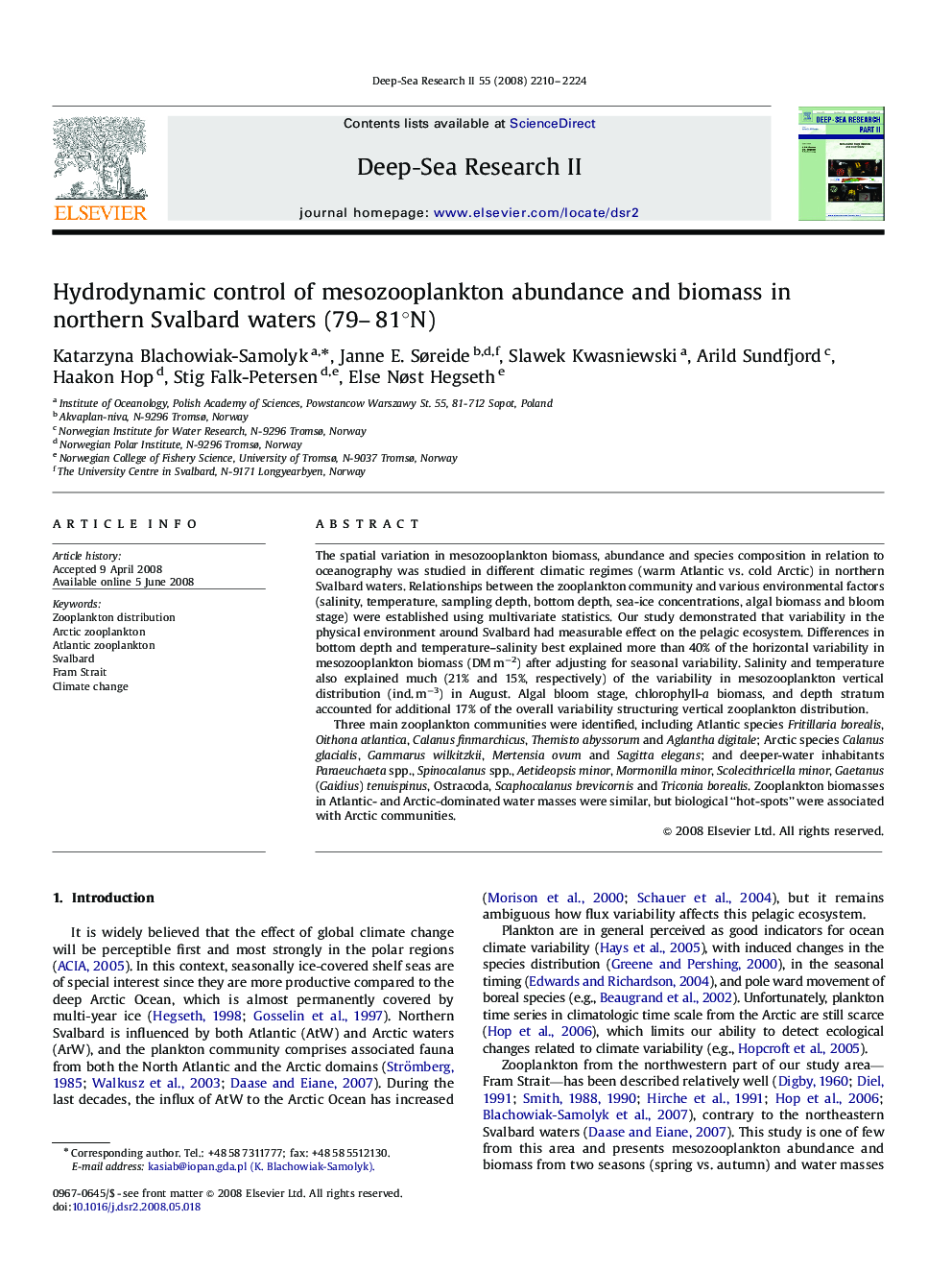| Article ID | Journal | Published Year | Pages | File Type |
|---|---|---|---|---|
| 4537945 | Deep Sea Research Part II: Topical Studies in Oceanography | 2008 | 15 Pages |
The spatial variation in mesozooplankton biomass, abundance and species composition in relation to oceanography was studied in different climatic regimes (warm Atlantic vs. cold Arctic) in northern Svalbard waters. Relationships between the zooplankton community and various environmental factors (salinity, temperature, sampling depth, bottom depth, sea-ice concentrations, algal biomass and bloom stage) were established using multivariate statistics. Our study demonstrated that variability in the physical environment around Svalbard had measurable effect on the pelagic ecosystem. Differences in bottom depth and temperature–salinity best explained more than 40% of the horizontal variability in mesozooplankton biomass (DM m−2) after adjusting for seasonal variability. Salinity and temperature also explained much (21% and 15%, respectively) of the variability in mesozooplankton vertical distribution (ind. m−3) in August. Algal bloom stage, chlorophyll-a biomass, and depth stratum accounted for additional 17% of the overall variability structuring vertical zooplankton distribution.Three main zooplankton communities were identified, including Atlantic species Fritillaria borealis, Oithona atlantica, Calanus finmarchicus, Themisto abyssorum and Aglantha digitale; Arctic species Calanus glacialis, Gammarus wilkitzkii, Mertensia ovum and Sagitta elegans; and deeper-water inhabitants Paraeuchaeta spp., Spinocalanus spp., Aetideopsis minor, Mormonilla minor, Scolecithricella minor, Gaetanus (Gaidius) tenuispinus, Ostracoda, Scaphocalanus brevicornis and Triconia borealis. Zooplankton biomasses in Atlantic- and Arctic-dominated water masses were similar, but biological “hot-spots” were associated with Arctic communities.
